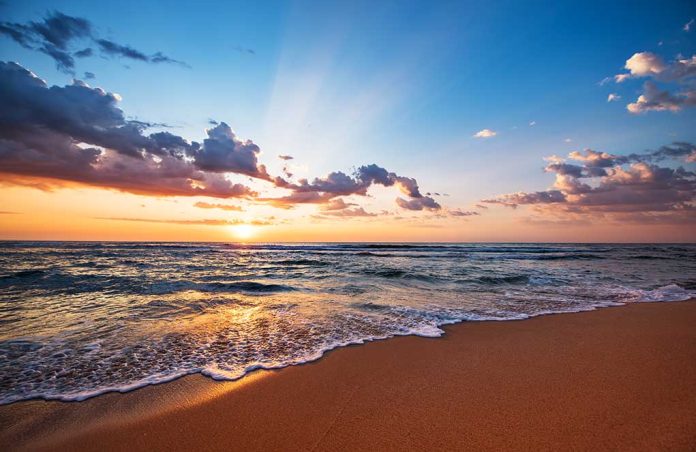
A warning has been issued after blue sea dragons were spotted in North Carolina’s outer banks, leaving beachgoers concerned.
At a Glance
- The Cape Hatteras National Seashore has warned about the venomous blue sea dragon.
- The sea slug can store venom from its prey for defense.
- Beachgoers are advised not to touch these creatures.
- Blue sea dragons float upside-down and can deliver a powerful sting.
- They have recently washed ashore on the Outer Banks.
Understanding the Blue Sea Dragon
The Cape Hatteras National Seashore has issued a warning to beachgoers about the appearance of the venomous sea slug, Glaucus atlanticus, commonly known as the blue sea dragon. These stunning and tiny creatures, growing only up to 1.3 inches, pack a potent sting due to their unique feeding habits. They consume venomous prey like the Portuguese man o’ war and store the venom for their own defense, delivering a sting even stronger than that of their prey.
The blue sea dragons have been making appearances on beaches along the Outer Banks, North Carolina. Officials have noted that these creatures could be washing ashore due to strong winds at sea. The National Park Service has shared through social media that these sea slugs live in the open ocean and occasionally get stranded on land following severe weather conditions. Despite their small size, they should not be underestimated due to their venomous nature.
Venomous blue sea dragons are washing up on North Carolina shores https://t.co/chD2BSexRe
— 13WMAZ News (@13wmaznews) September 25, 2024
Characteristics and Habits of Blue Sea Dragons
Blue sea dragons are typically found in the Pacific, Indian, and Atlantic oceans, preferring temperate or tropical waters. Recently, sightings have expanded to areas like the Texas Gulf Coast, likely due to warming waters. These creatures have a fascinating way of floating at the sea surface by storing air bubbles in their stomachs. This unique buoyancy strategy allows them to float upside-down. When their habitat expands to coastal areas, it increases the likelihood of encounters with humans.
“This venomous sea slug lives in the open ocean and occasionally gets stranded on land following strong winds,” National Seashore officials said in a Facebook post. “They may only grow to about an inch long, but don’t let their size fool you. They pack a punch!”
https://www.foxnews.com/science/venomous-creatures-wash-up-popular-north-carolina-beaches
Blue sea dragons often travel in groups known as “Blue Fleets.” If these groups are discovered onshore, whether the creatures are alive or dead, they should still be handled with caution due to their venomous nature. The National Park Service advises enjoying these fascinating organisms without touching them to avoid painful stings.
Advice for Beachgoers
Beachgoers are strongly advised to maintain a safe distance from these intriguing creatures. Even if a blue sea dragon appears dead, it retains the ability to sting. The National Park Service encourages people to admire the creatures from afar and to share pictures or videos if they come across these sea slugs on beaches. Public awareness is crucial to prevent potential injuries from these venomous creatures.
“Blue Sea Dragons can travel in groups known as ‘Blue Fleets,’” officials said. “If they are discovered, dead or alive, they remain venomous. Please enjoy this fascinating organism without touching it.”
As Cape Hatteras National Seashore officials continue to monitor the situation, they have issued notifications through their social media channels to inform and protect the public. This is especially critical given that blue sea dragons have been periodically washing ashore, driven by inclement weather and changing oceanic conditions.
Sources
- Venomous creatures wash up on popular North Carolina beaches
- NC beachgoers warned to avoid venomous sea slugs

















